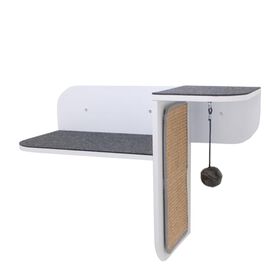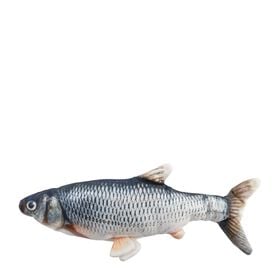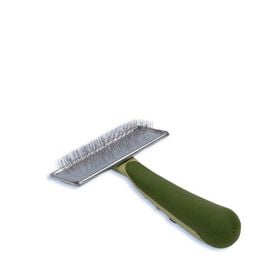Bali is known for its famous and highly expressive angular dances. The cousin of the Siamese was named Balinese after the dancers from this Indonesian island, and shares their charming and graceful qualities. It was also given the name Balinese because such a worthy Oriental cat breed should bear an Oriental name.
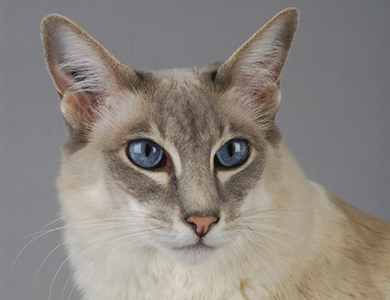
Morphology and appearance
The modern Balinese have all the characteristics of the modern Siamese, except for the long hair. Everything from the end of the nose to the tip of the tail is slender and athletic. The body is elongated and tubular. The legs are long and slim, ending in small oval paws. The head is longer than it is broad, forming an elongated triangle. The ears, large and wide at the base, complete the triangular shape. The eyes are almond-shaped and their colour is a striking deep blue. The tail is very long and flowing, forming a plume.
The Balinese coat is of medium length, fine and silky, and has no undercoat. The hair lies close to the body, helping maintain the slender Balinese silhouette. The coat colour always has a point pattern, meaning that the body is cream, while the extremities are darker. All point colours, including seal, lilac, tortie, tabby, and even the presence of white in the point pattern (e.g., chocolate and white point) are accepted.
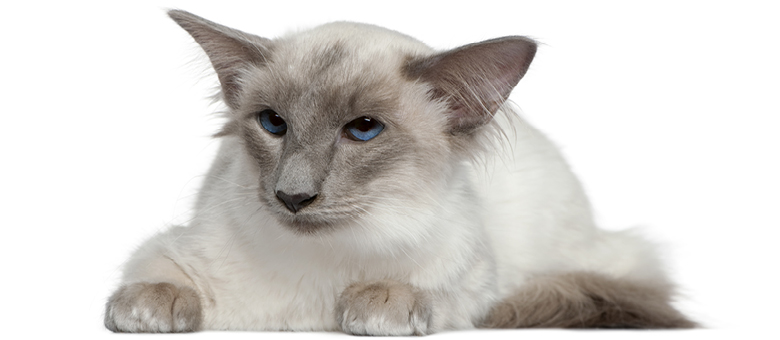
Level of maintenance (grooming)
Balinese cats have no undercoat, which allows for easier maintenance. A weekly brushing is enough to remover dead hair and maintain the luxurious tail plume.
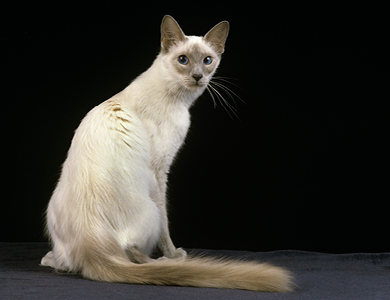
Behaviour
Like the Siamese, Balinese enjoy moving, participating in everyday life at home and talking with their owner. Balinese definitely share this characteristic with their cousin, although their voice is a bit softer. Individuals vary considerably, and some Balinese are less talkative than others. They are generally lively and intelligent, and always enjoy games and fun training sessions with their owner. When planning their environment, it’s important to keep in mind that they like to climb, jump and play.
Origins
The Balinese are essentially long-haired Siamese. However, while the Siamese origins are practically immemorial, the history of the Balinese officially dates back to only around the 1950s. Before that, long-haired Siamese had been observed only sporadically or in vague contexts. In the U.S. in 1950, two Siamese breeders, Marion Dorsey of California and Helen Smith of New York, decided to explore the genetics responsible for the long hair of some of the kittens in their litters. The kittens were initially identified as long-haired Siamese before Helen Smith renamed them Balinese in order to distinguish them from their cousins. A third breeder, Sylvia Holland, worked to further establish the breed standard in the 1960s and 1970s.
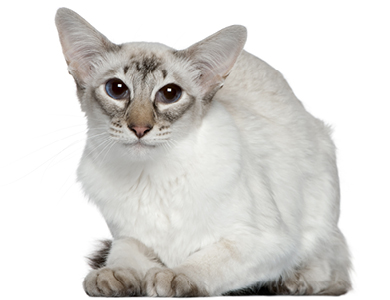
Unusual facts
Like the initial Siamese, the original Balinese were less elongated and had a much rounder head than the modern Balinese. In fact, the modern Balinese have very few common ancestors with the old-style Balinese, since they were developed from Siamese with characteristics that were newly sought-after in the 1980s.
The Javanese are now considered by everyone to be a sub-breed of the Balinese. Since they are a cross between the Balinese and the Oriental shorthair, the only difference between the two is coat colour. The Javanese coat comes in all colours and patterns, except the point pattern (exclusive to the Balinese).


